Leica Monochrom Detail Capabilities and more..take a look
Really? More on the Monochrom?
The Leica Monochrom has been written about many times on this site not only from me, but from many other owners who wanted to share their experiences with the camera. For those who do not want to read any more about it, then close your browser now 🙂 For those asking for the Fuji X20 and Nikon A coverage..hold on..they are coming as well 🙂 For those wanting more on this B&W only camera from the worlds most expensive 35mm camera brand, read on 🙂 Also check out my continually updated sample gallery.
I have recently had a reunion with the Monochrom after selling off my 1st one and yes, it is now back in my hands. Even though my main camera is the Leica M 240 and Sony RX1 and both can do a convincing B&W, the Monochrom does indeed have something about it that I can not put my finger on. Is it mental? Is it silly? Is it an illusion? Well, it could be but not really. The fact is that there is something in the MM files that are different from the M files and especially the M9 files. To make it simple, more micro contrast, more details, and it seems like more shades of grey which all come together to give a bit of a different rendering over what the M gives me with B&W. I love my M 240 with a passion and have used it every single day since it arrived. I have been using it more than I used my old M9 and it is a beautiful camera (just like the M9 is still a beautiful camera).
But the Monochrom is different. It is a specialty tool that does one thing and when a tool is designed to do one thing it usually does that one thing VERY well.
Is it Better? Most would say “different”. The MM does do better in low light (than the M9 and M) past ISO 3200 and all the way up to 10,000 and if you are a street shooter, the MM is probably the worlds best street shooting digital camera. If you are into fine art B&W, the MM is the worlds best digital 35mm for B&W. If you want to take B&W portraits with amazing silkyness and unique B&W qualities, the MM is the worlds best B&W 35mm digital. If you want to capture the most detail you can possibly capture, to the point that you simply can not capture anymore, the MM is the worlds best digital 35mm B&W dedicated (Nikon D800E is up there as well).
Little Man – Monochrom and Leica 50 Summitar from the 1940s. BTW, this shot is not Photoshopped. The kid has makeup on his face as we were at a Zombie event. He was mad at his parents for some reason and had just been crying. I thought he looked like an older man in a boys body and asked his parents if I could take his picture. They said yes, so I did. But the dark spots on his face are from his makeup, not photoshop 🙂
ReVisiting the MM
I attached one of my external hard drives I use for travel and was going over some older shots I took with the Monochrom (in addition to a couple of new ones) and I was flabbergasted when I opened one of the files up in 100% full size. I spent a good 15 minutes scrolling around and looking at the detail in the photo. The windows, the curtains inside each window, the clothes hanging out to dry. Wow.
*The original file was exposed incorrectly and the house was too dark and I ended up running a Silver Efex Preset through it and it instantly came to life. It also added noise but it doesn’t matter as it looks great.
Many have said “The Monochrom can not look like film” and this is mostly true but these files from the MM are superb and I feel they surpass film. Ive shot thousands of frames with Tri-X and it can be gorgeous but it can also be not so gorgeous. As with any form of photography, it is really all about the light. If we shoot in bad light with film, the results will be flat. If we shoot in bad light with digital, results will be flat. I know there are many film lovers and die hards but for me, I just do not have the time to shoot film and I prefer not to deal with the limitations. We are in an age of “no limitations” and “no compromise” when it comes to photography. Most cameras made today, even $300 models can do amazing in the right hands. Technology has come a log way but a camera like the Monochrom is for the few who prefer a tool that will make them think, work and LEARN.
With the MM you do one thing and one thing only. Shoot B&W photos. You can not fall back on color, you can not shoot video, you can not use an EVF. You simply aim, compose, expose and fire.
I know I have recently done some side by sides with the Leica M but have not yet seen the level of detail from the M that I see in the image below. My crops in my last test were close but for super fine detail it does not beat the MM.
For detail freaks the MM does not disappoint. For those that do not care, just about any camera can do the job and even the Olympus OM-D E-M5 does a convincing B&W.
Details…
The image below was shot with a 35 Lux FLE and you can see the distortion (that I did not correct) but what is blowing me away is the detail. THIS is the detail everyone speaks of when they praise the Monochrom. I have a 27″ display and it looks amazing when viewing details at 100%. Remember, the noise was added when I ran it through Silver Efex.
Click the image below to see the full size file.
Click it and take a look at the amazing detail at 100% – you can even see me in the doorway reflection 🙂
or you can click on the 100% crop below to see the detail at 100%
–
High ISO
I was out with my fiancée last night and brought the Monochrom with the Zeiss 50 Planar along. ISO 6400, f/2 – click it for larger. No PP, this is direct from camera..at 6400 in a very low light room.
–
One more quick snap direct from the RAW file. Shot a Hummingbird while taking a walk in full AZ sun with the Ziess planar and the 100% crop is embedded when you click the image…
–
I have to say that after testing the Zeiss Planar 50 on the M and MM…I have come to the conclusion that it is one of the best 50’s available in regards to IQ that you can buy for these cameras if you love detail, pop, smoother Bokeh than a standard summicron and VERY rich colors. I will have a new look at the Zeiss 50 Zm on the M and MM soon. At under $900 it is a deal if you can swing for a Leica lens after spending so much on the body. It is not equal in build to the Leica cron but IQ in many ways surpasses it. For $2100 or the cost of a 50 Summicron you could pick up the Ziess PLanar f/2 and Zeiss Sonnar f/1.5. I feel the Planar does best on the M and the Sonnar does best on the MM. Both are stunning lenses.
Finally a shot at night with a 35 Lux FLE at ISO 1000. Click it and take a look at the detail. I originally underexposed so had to bring out some shadow detail which brought out more noise.
But this was shot around midnight in San Francisco.
The Monochrom is camera that has brought with it excitement, controversy, anger, hatred and passion/love. Some adore it, some hate it, some act like anyone who owns one is not right in the head for spending that kind of cash on one. One thing remains constant. Those who do own it seem to be VERY passionate about it. More so than any other camera I have seen. I have spoken with many MM owners and they all tell me it is a camera that will stay with them until they or it dies. That says a lot. It even works extremely well with classic and cheaper lenses.
Do you need this camera to shoot decent Black & White? Absolutely not! Like I mentioned earlier cameras like the OM-D E-M5 do great as well. So does 90% of other digitals on the market. The Mono is for those who want a tool that will help them grow, give them no other options and also give them the worlds best B&W output in the 35mm digital world.
Steve

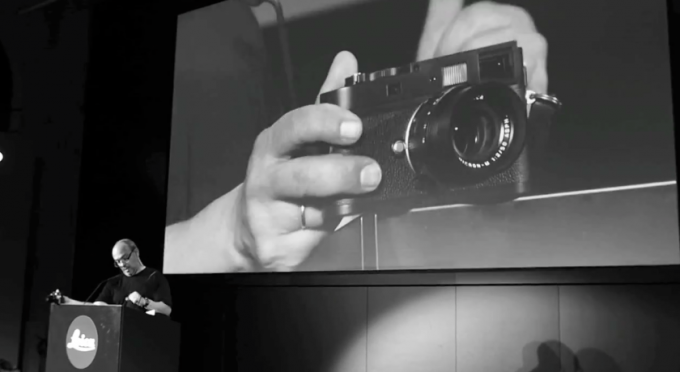

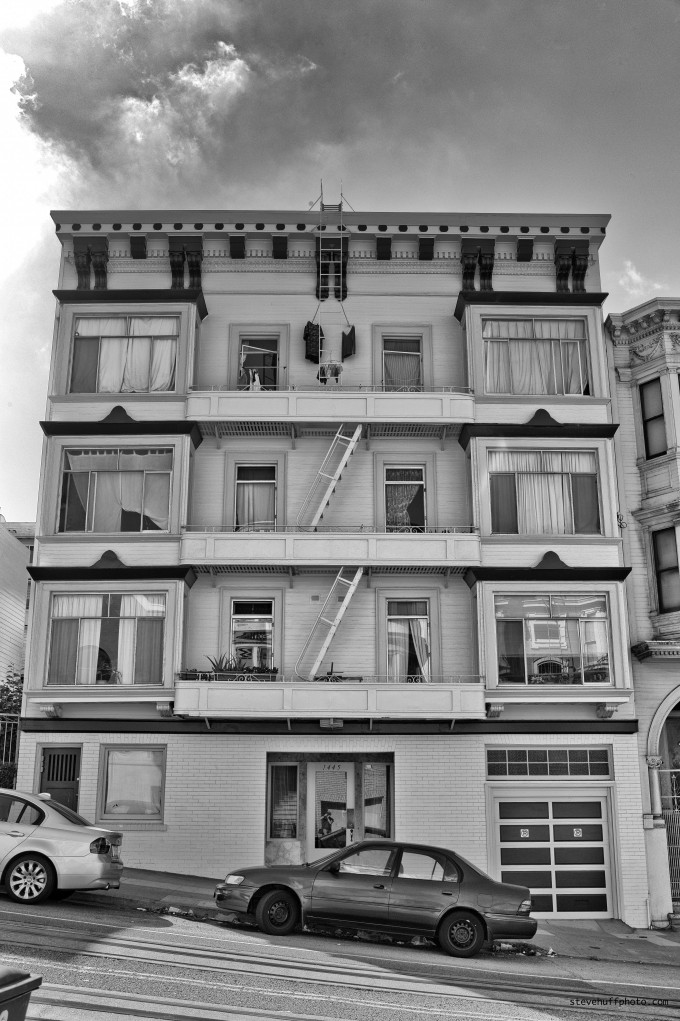
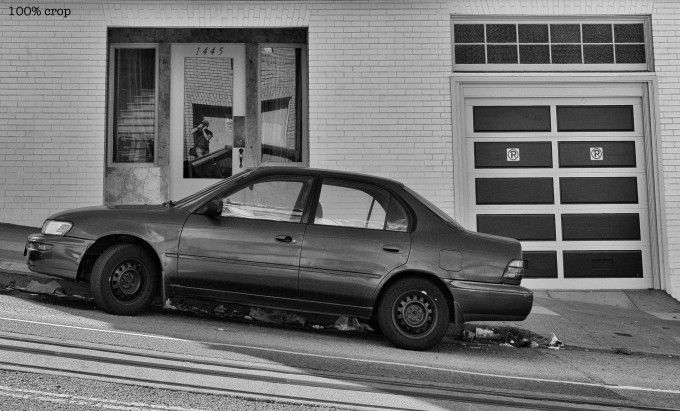
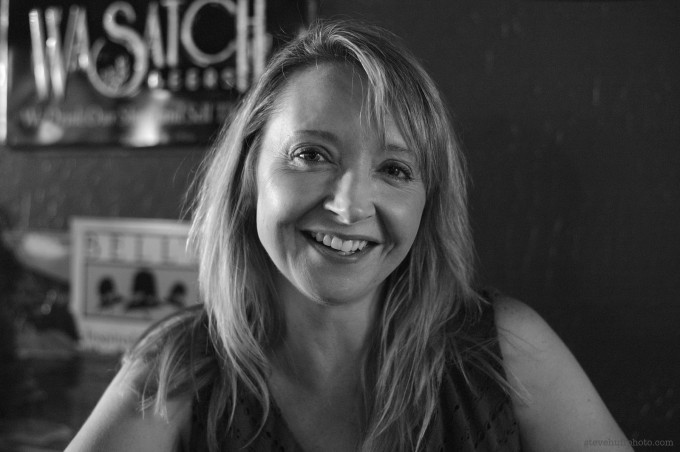
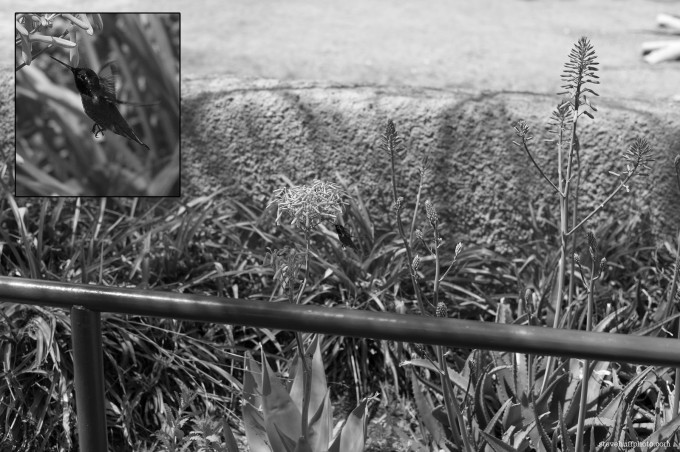
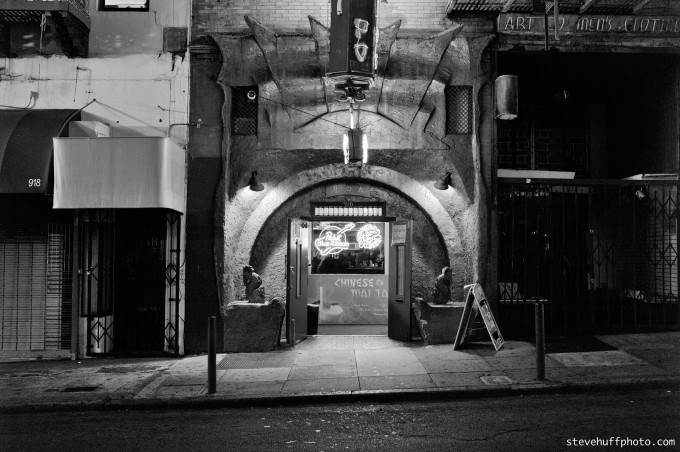


The picture of your fiancée shot at 6400 reminds me of my Tri-X negatives developed in D76 1-1. And that was on a good day exposing at 400.
This really creates a predicament as I can’t justify another Leica. Oh no! What to do, what to do…
wow, just wow 🙂 the detail and clarity…sharpness..mindblowing! thanks for sharing
I absolutely love my MM and great article Steve. There is not a better B&W digital camera for the street period. I to love that this camera creates files that don’t look like B&W film. I love B&W film but I also love the files and the prints I make from the MM. Its almost like having a 500 C/M rangefinder that had great high ISO performance. To be able to shoot on the street at 1600 and 3200 ISO allows me to freeze action shutter speeds of 1/500 and to have deep depth of field if thats what i need. And the files at thsoe ISOs look amazing.
Very valid points, Patrick! It’s clearly not as ‘simple as that’, as You put it… And one other point adding to the long list of ‘negatives’ is the time-consuming ‘keeping up’ with the race of the indeed shorter and shorter upgrade-cycles, be it on the camera or other hardware/software-side… Files are getting bigger hence my other hardware need to follow suit;o) etc etc… Shootin’ digital can truly be a ‘noisy’ affair (in lack of better words;-) all things taking into consideration.
Perhaps I shoot note that I shoot both digital/film – whichever fits the task at hand – and Im beginning to notice the mental ‘wear & tear’ by this constant ‘pressure’ to have Your stuff always ‘in-sync’ with everything else… And that kind of sucks the fun out of it on some level. The ‘noise’-level is enormous these days/years from all the input all around us and You need a clear head to steer through and still maintaining a high level of creativity.
One of the reasons (initially, at least) for me being so happy about the Monochrom was the ‘getting-back-to -basics’ and overall purist approach of the whole thing. Perhaps I fooled myself a little bit there but at least the output is close to what I want from a digital black/white fullframe.
Best
klehmannb
‘I just do not have the time to shoot film and I prefer not to deal with the limitations. We are in an age of “no limitations” and “no compromise” when it comes to photography.’
Steve, it takes no longer to shoot with film than it does with digital – 1000th of a second at f8 is the same with either. Limitations and compromises come with both film and digital and to suggest that the digital age is one of no limitations and no compromise when it comes to photography is just nonsense, it’s littered with both not least the amount of time and effort people have to put in to get their digital files to look like the film they find so tiresome and time consuming. Equally, if digital photography is so free of limitations and compromise why do so many people have to spend so much time justifying it?
Simply not true. Shooting with film is not only expensive (when you shoot as much as I do, it is insanely expensive) but t ime consuming if you process your own negatives (I did), scan your own film (I did) and make your own prints (what I was doing). This took much more time than any digital workflow. If I passed these duties on to labs it would be even more expensive at $50 a roll in some cases just to do HQ scans. When I was shooting with my MP I would sometimes shoot 5-6 rolls a day. That adds up quick in cost and time and when I look back at all of these scans they are in no way better (I am talking quality) than what I can get from 2012-2013 digital. So with digital I save time, save money (over the long term) and get better results with less headaches.
Not as simple as that Steve. The upgrade cycle is for most people quite fast with digital, plus the back up hard drives, new computers to process the ever expanding mega pixels .Software upgrades, the price of inks, sensor cleanings etc… Film can be relatively cost effective if you know what you are doing. As fast as digital..no but I get what I want practically out of camera. A little dodge and burn here and there and I am done. As for better results?? Well purely subjective. There are many who would disagree with that. Digital is high throughput, and in most cases it shows. No matter how much I try to convince myself that digital is the way and that it has “better results” when I nail a MF Tri-X shot it is still obvious to me that digital is missing something. They are both tools of course and one is better in some circumstances than the other. But if i truly know what shot I want, hands down I will pick film to capture it. I think for fine art film is still the way to go. Great MM shots BTW. I agree, it is a step away from many other digital cameras…Pity about the price.
As much as I want to like the leica monochrom, I can’t overlook the blown-out highlights in both images. The image of the boy must have been a low-contrast scene. But even under those conditions the dynamic range in the highlights is just mediocre, or even worse. the second image shows the amazing detail the monochrom can deliver, however, the blown-out cloud to the left is very distracting, at least to my eyes. with film, the transition from the shadow to the white cloud would have much more gradual, and with more detail. Yes, the resolution of the leica M is mind-blowing (that’s the appealing part to me), and the overall dynamic range may be even class-leading (especially in the middle gray range down to the dark range), but, unfortunately, the sensor still needs to go a long way until it will be able to generate a smooth transition in the highlights without major blow-outs. i really hope the engineers will come up with a solution for this issue.
I’ve read the MM pictures need to be underexposed b/c the DR in shadows beats the M9 by about 1+ or so stops (expected given the removal of the color filter), the DR in highlights is actually worse than the M9 b/c of the single channel and no fallback to recover.
However, I don’t think his exercise with that pic was one in DR – it was more to show the resolution detail the MM is capable of. That’s always been my issue with the MM – take off the color filter on the Kodak CCD, boost base ISO so you get better signal to noise ratio at high ISO, and remove some script engravings off the M9-P and all of the sudden you have an $8K B&W only camera?!? Talk about paying more for less … I guess only Leica can convince people to empty their savings accounts for such a proposition 🙂
I have just finished my 1st week with my MM & it is everything that I wanted in a camera. Simplicity & capability all in one. I have not been shooting as much as I have wanted due to the cumbersome nature of my DSLR kit. I have also wanted a Leica for a long time, & after researching extensively to pick the right RF for me, the MM was the stand out. Yes it’s expensive but this is a camera that will be with me every day for the rest of my life. I will no longer miss those opportunities that arise from day to day. I’m also pretty keen to get a screw mount adapter & use the lenses that my grandfather used with his Leica III…
Can someone recommend a screw mount adapter & colour filters that would be suitable for the 50 Lux?
Turns out this new Nikon Coolpix A is a pretty “Bad ASS” little cam and is giving the Sony RX100 “Pocket Rocket” quite a run.
Apparently with Yellow, Orange , Red and Green (Monochrome) filter effects along with Sharpening and contrast. Sounds pretty cool.
Any plans to review the A?
John Vink had an interesting observation about post-processing. Done too heavily, the light source becomes confusing and undefined. The question is asked: “Where is the light?” I have that feeling when looking at photo #2 – the apartment building. The way the sunlight falls on the pavement looks unnatural. There should be more contrast on the surface between the shaded and lit sections.
I find this with plenty of MM images; proper processing is a rarity in the samples on the internet…although I have seen them. It just seems as if getting it right and proper is something few owners have mastered yet. In the case of image #2, that may be Steve’s preferred PP treatment; I have no protest on that score. It just seems difficult in execution.
As to superiority of the MM images versus film, that may be the case in ISO levels of 320 and up, but I wonder why so few people complain about not having the ability in shooting in the 25 to 320 levels. It’s ironic that so many are getting the ability to shoot in darker situations, while the brighter conditions are more common to the average, amateur photographer. I’ll keep my PanF+ for now, thank you very much! 🙂
I guess you are not aware that the photo you speak of (#2) was not done this way to show what a work of art it is, as it was a throw away shot from months ago. I posted it, as is, only to show the detail that can be captured, not as some WOW shot. I thought this was clear but then again, many do not read what is written. That is a detail example ONLY. It was an underexposed horrible shot that was run through a filter that brought out the face of the building, then I saw the detail. Why do so many assume TEST shots are supposed to be works of art? This is a mainly a review blog and photos in reviews are shown for a reason…
As for film vs MM, for ME and many others the MM easily replaces film. I never shot ISO 25 film so I do not miss it when shooting the M or MM. Not my thing. If it was I guess I would be shooting film.
I wasn’t critquing the image as a work of art, just commenting on how the post-processing needed with the MM still results in flat, indistinctive light. As you say above: “As with any form of photography, it is really all about the light.” I agree. I’m just not seeing too many MM files producing deep and broad tonalities in the greys with properly exposed highlights. I have seen examples of information being pulled from MM shadows that other cameras cannot – that is impressive. All of this suggests a different approach to the PP which perhaps takes a long time to master. If, as Vink states, I have to ask where the light is, then the post-processing is a failure. But that is strictly a personal preference.
Wow! A hummingbird!
I think that pics made with the Nikon 1 V2 have more film quality than those made with the MM. For these to get that film quality one should do what Ashwin did: to use old lenses. I don’t know whether we’re in an age of no compromise and no limitations, but we for sure are in a time when a camera doesn’t last longer than 3 years (In Steve’s case, much less). I guess cameras still maintain the analogue philosophy of endurance through time, unnecessarily. Digital bodies could be built much flimsily than they’re right now. 95% of them, after three years will be trashed. Only lenses got any hope.
Nikon V1 images do have a film like feel, but the Mono doesn’t claim to give a film like feel or quality, in honesty as someone else pointed out, it surpasses film in many many ways. My main cameras last 3+ years just as my M9 did my M 240 will do the same. Cameras I review will stick around for a while and then leave but I still have an Oly OM-D, Nikon V1 setup, Olympus E-Pl1 and a few more. I am not sure if the Mono will stay as I still use the M 240 more and prefer it. But the best work I have seen on the Mono was done with the 50 APO, hands down.
As for the V1, its capabilities do not even come close to the Monochrom – try shooting that last shot at ISO 1000 in near pitch blackness and see what you get. Try shooting a portrait in a dim interior at 6400 and see what you get. Shoot that building at base ISO and the detail will not even be close. The V1 is superb, which is why I own one but compete with the MM for no compromise B&W it can not. If it did, we would have a miracle $300 camera that would sell by the truckloads!
I see your point. Something that seems interesting to me about the MM is what you say of being not equivalent to B&W film, but something different, a new kind of B&W. I agree with that. Much more detail, huge dynamic range (but tremendous highlights and that tendency to watercolor effect).. Still, it amazes me the quality of the small Nikon and the short life span of digital cameras in general, Leica included. Thanks, as always, for your reviews and replies and keep up the good work.
I am a fan of Leica but I think you guys bought into a marketing ploy here. It’s the same sensor as the M9 w/o a color filter and you’re all stoked to pay $8K for it … That’s some serious Leica Cool-Aid you all are drinking but to each their own. But ibet most of the same people oh’ing and ah’ing over MM images couldn’t tell apart from an RX1 converted B&W and I will go further to say the RX1 probably wipes the ground with MM files at high ISO in terms of image IQ and details. But I guess if it works for you then go for it … I am saving my pennies for Leica glass and will transfer to B&W using my M9 and M type 240!!!
Steve, very politically correct, or maybe brandering (brand pandering). 🙂 tell it like it is! The Monochrom is THE B & W Leica experience. Better than film. Yeah, I said it, better. You simply can’t take an ISO 8 or 10,000 shot with film and have it look any better. The capabilities from the camera are astounding.
Excellent review, Steve. Thank you. And I love the photographs.
The photograph of the apartment house has a small, circular artifact just to the left of the strut holding the ladder to the roof. Do you know what that is?
It’s a grease spot on the sensor. I know because I have a bunch on mine! 🙂
Looks like dust on the sensor.
I’ve shot just about every digicamera and back and never have had b+w that looked like that
Oh man, what can I sell?
The look of the last one does me in !
What can I say? Great looking images. I wish you’d do them without the added S Efex layers though. Sort of ruins it for me. It’s digital, not film.
only one had silver efex, and I noted it. BTW, you use Silver Efex on digital, not film. 🙂
I know that. 😉 What I meant was I don’t like to see digital manipulated to look like film; feels artificial to me. I like to know what the camrea/sensor/lens combination does with as little interference out of camera as possible. That’s how I work with my D700 and that’s how I view other cameras.
Just me I guess… 😉
Steve, digital is amazing and the MM intriguing. Your statement “We are in an age of “no limitations” and “no compromise” when it comes to photography.” is true in all senses except possibly for longevity. I worry that my files of ones and zeroes may not be readable – or rather that the software will not exist that is able to read them – in the future.
Hi Steve while at the Miami store opening ceremony I had a chance to speak to a well know wedding photography that shoots mostly in B&W and with one lens. He recently began shooting with the Monochrom and what caught my attention is when he decribed shooting at night stopped down at 10,000 ISO.
I mention him in my blog here:
http://blog.duanepandorf.com/2013/03/22/leica-store-miami-grand-opening/
Riccis is awesome. Great guy. He worked with me on my 1st NYC workshop and I have always been a fan of his work. Haven’t spoken to him in a while but he is a talented man.
The details in these is really amazing and make a very strong case for the MM. That iso 6400 shot of your fiancee shows unbelievable smoothness and detail at the same time. I`m hanging on to the M9, but must say the MM is in a class of its own and, as far as I`m concerned, more convincing than the M240.
The clarity of the photos are amazing. Thanks for sharing!